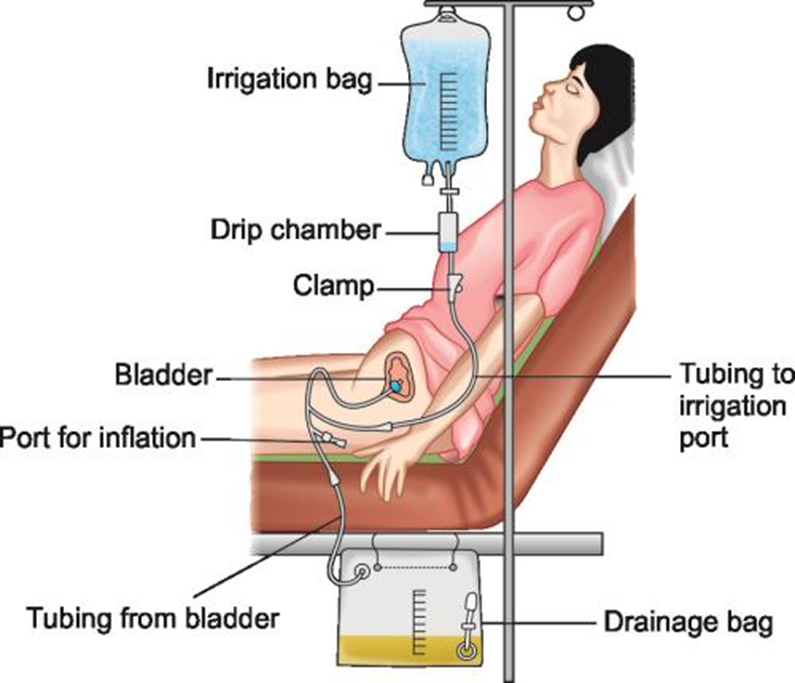A nurse is caring for a client who is preoperative. The nurse signs as a witness on the client’s consent form. The nurse’s signature on the consent form indicates which of the following?
Records that the client sees the procedure as necessary.
Determines the client does not have a mental illness.
Assists that the nurse has explained the risks and benefits of the procedure.
Confirms the client is competent to provide consent.
The Correct Answer is D
Choice A Reason:
“Records that the client sees the procedure as necessary” is incorrect. The nurse’s role in signing the consent form is not to document the client’s perception of the necessity of the procedure. This responsibility typically falls to the healthcare provider who explains the procedure and its necessity to the client.
Choice B Reason:
“Determines the client does not have a mental illness” is incorrect. While assessing the client’s mental status is part of the overall care, the nurse’s signature on the consent form does not specifically indicate this. The nurse’s role is to witness the client’s signature and ensure they are giving informed consent.
Choice C Reason:
“Assists that the nurse has explained the risks and benefits of the procedure” is incorrect. It is the responsibility of the healthcare provider performing the procedure to explain the risks and benefits. The nurse may reinforce this information but does not primarily provide it.
Choice D Reason:
“Confirms the client is competent to provide consent” is correct. The nurse’s signature on the consent form indicates that the nurse has witnessed the client signing the form and has verified that the client is competent to provide informed consent. This includes ensuring the client understands the information provided and is making the decision voluntarily.
Nursing Test Bank
Naxlex Comprehensive Predictor Exams
Related Questions
Correct Answer is C
Explanation
Choice A Reason:
The gastrocnemius muscle, located in the calf, is not a recommended site for intramuscular injections in newborns. This muscle is not typically used due to its small size and the difficulty in accessing it safely for an injection.
Choice B Reason:
The dorsogluteal muscle, located in the buttocks, is also not recommended for newborns. This site is avoided because of the risk of damaging the sciatic nerve and the relatively thick layer of subcutaneous fat, which can interfere with the absorption of the medication.
Choice C Reason:
The vastus lateralis muscle, located in the thigh, is the preferred site for intramuscular injections in newborns. This muscle is well-developed at birth and provides a large, easily accessible area for injections. It is also away from major blood vessels and nerves, making it a safe and effective site for administering medications like vitamin K.
Choice D Reason:
The ventrogluteal muscle, located on the side of the hip, is another site used for intramuscular injections, but it is not typically recommended for newborns. This site is more commonly used in older children and adults due to its deeper location and the need for precise anatomical knowledge to avoid complications.
Correct Answer is A
Explanation
Choice A Reason:
When calculating the fluid balance for a client undergoing continuous bladder irrigation (CBI), the irrigation solution must be deducted from the total urine output. This is because the irrigation fluid is not part of the client’s actual urine production but is an additional fluid introduced into the bladder to prevent or remove blood clots and ensure catheter patency. By deducting the irrigation solution from the total urine output, the nurse can accurately determine the client’s true urine output and fluid balance.

Choice B Reason:
Subtracting the irrigation solution from the intravenous flow sheet as output is incorrect. The intravenous flow sheet is used to document fluids administered intravenously, not those introduced into the bladder. Therefore, this choice does not apply to the management of continuous bladder irrigation.
Choice C Reason:
Documenting the intake hourly in the urine output column is also incorrect. The urine output column should reflect the actual urine produced by the client, not the irrigation solution. Including the irrigation solution in this column would lead to an inaccurate representation of the client’s urine output and fluid balance.
Choice D Reason:
Adding the irrigation solution to the oral intake column is incorrect as well. The oral intake column is designated for fluids consumed orally by the client. The irrigation solution is introduced directly into the bladder and should not be recorded as oral intake.
Whether you are a student looking to ace your exams or a practicing nurse seeking to enhance your expertise , our nursing education contents will empower you with the confidence and competence to make a difference in the lives of patients and become a respected leader in the healthcare field.
Visit Naxlex, invest in your future and unlock endless possibilities with our unparalleled nursing education contents today
Report Wrong Answer on the Current Question
Do you disagree with the answer? If yes, what is your expected answer? Explain.
Kindly be descriptive with the issue you are facing.
